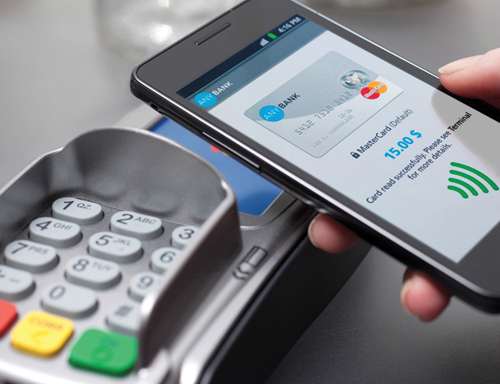Nowadays mobile payment apps have made life of common man easier, by offering a platform for making payments for almost everything using one medium.
In today’s era, using cash for making payment is an outdated practice. Majorly in all countries of the world, mobile payment has been adopted as mode of payment, as it directly connects with your bank account or credit card, to make payment. Mobile payments have definitely prevented customers from threats of losing cash, moreover it has increased purchasing power of the customers.
For example, if a customer has 100 dollars of cash in his/her pocket, then he/she will spend within that budget only. But if a customer is using a mobile payment mode, which is connected to a bank account, the customer will be motivated to spend a little extra on the items he/she likes. Considering this motivating factor and increasing demand in the market for mobile payment mode, merchants from every stream of business are obliged to offer this mode of payment to its customers.
Let us study a recent example of demonetization steps taken by the government of India. Due to the discontinuation of certain currencies, there is an immediate crisis in the market for currency notes. From day to day grocery shopping to running large scale businesses, people were habituated to use cash as a primary and most preferred mode of payment.
Read More: India’s ban on paper money, cashless societies, and the loss of freedom
Only when the scarcity for cash was witnessed by the market did people start to understand the importance of mobile payment modes. How easy, fast and secure it is to make payment using a mobile payment wallets. This is a case study of reformation of e-money in India. However, there are many countries where e-money/mobile payment is the most convenient and most used mode of payment to prevent robbery/theft and also saving time.
Security factor of mobile payment
So, we’ve understood various positive aspects of mobile payment. Now, let us talk about the security factor of mobile payment.
In order to win the trust of customers, it is important for the service provider to provide a mobile payment wallet that gives seamless user experience while making payment and assures customers that their bank account details are secure.
With the increase in use of online financial transactions, there is also an increase in online cybercrime. Therefore, it is vital of a payment service provider to ensure the security measures and educate consumers on safe practices and raise awareness of the increasing appeal of mobile devices to thieves.
Cindy Merritt, assistant director of the Retail Payments Risk Forum recently cited the security benefits of mobile payment when being used for transactions – both in terms of upcoming technology such as NFC and in using such a device to carry out bank transfers and online transactions.
“First of all, the security functionalities resident in the mobile handset provide authentication capabilities that don’t exist in the current payments environment,” says Merritt. “The ability to add passwords and GPS location functionality to the handset represents additional security controls to accessing payment instruments in the future mobile wallet. Today, there are no locks on your leather wallet to preclude a bad actor from stealing your credit and debit cards and using them for illicit activity.”
There are certain factors that a mobile payment app needs to have and explicitly communicate with its users.
Safe and fast Payment Gateways: A mobile wallet is made secure by integrating it with secure payment gateways and one time password authentication. The details submitted by customers are not accessible to any other person. It is stored in the application only.
Card payment vs. Computer chip: The conventional mode of card payment uses a mag-strip technology that is very easy for cybercriminals to breach and make a clone card to use for making payment. On the other hand, the mobile payment devices use contactless technology in the form of an embedded computer chip, the mobile phone will be a much more secure payment device than the plastic cards we use today.
Key Locks / PIN: Service providers of the mobile payment apps always suggest customer to keep their PIN, to login to the app, updated. This will prevent from any possibility of PIN hacking. Moreover, for entering the bank customer ID, there is option to use virtual keyboard for added security. Customers are advised to not share their transaction password and one time password with any third party, because a mobile payment service provider will never ask for one.
Report Suspicious Activity: The mobile payment services provider has 24/7 service center. If customer has encountered any suspicious transaction or activity in the app, he/she must call the service provider to check the action and stop any illegitimate transaction.
Check App Rating: There are n number of mobile payment apps available on apple store and google store. It is always advisable to check the application reviews posted by users and rating of the app before start to use it. The highest rating app having most downloads are the reliable ones.
With a little caution, using mobile payment apps and mobile banking is the fastest, easiest, and most secure way of making payment. You can make payment from anywhere at any time, all you need is internet.











